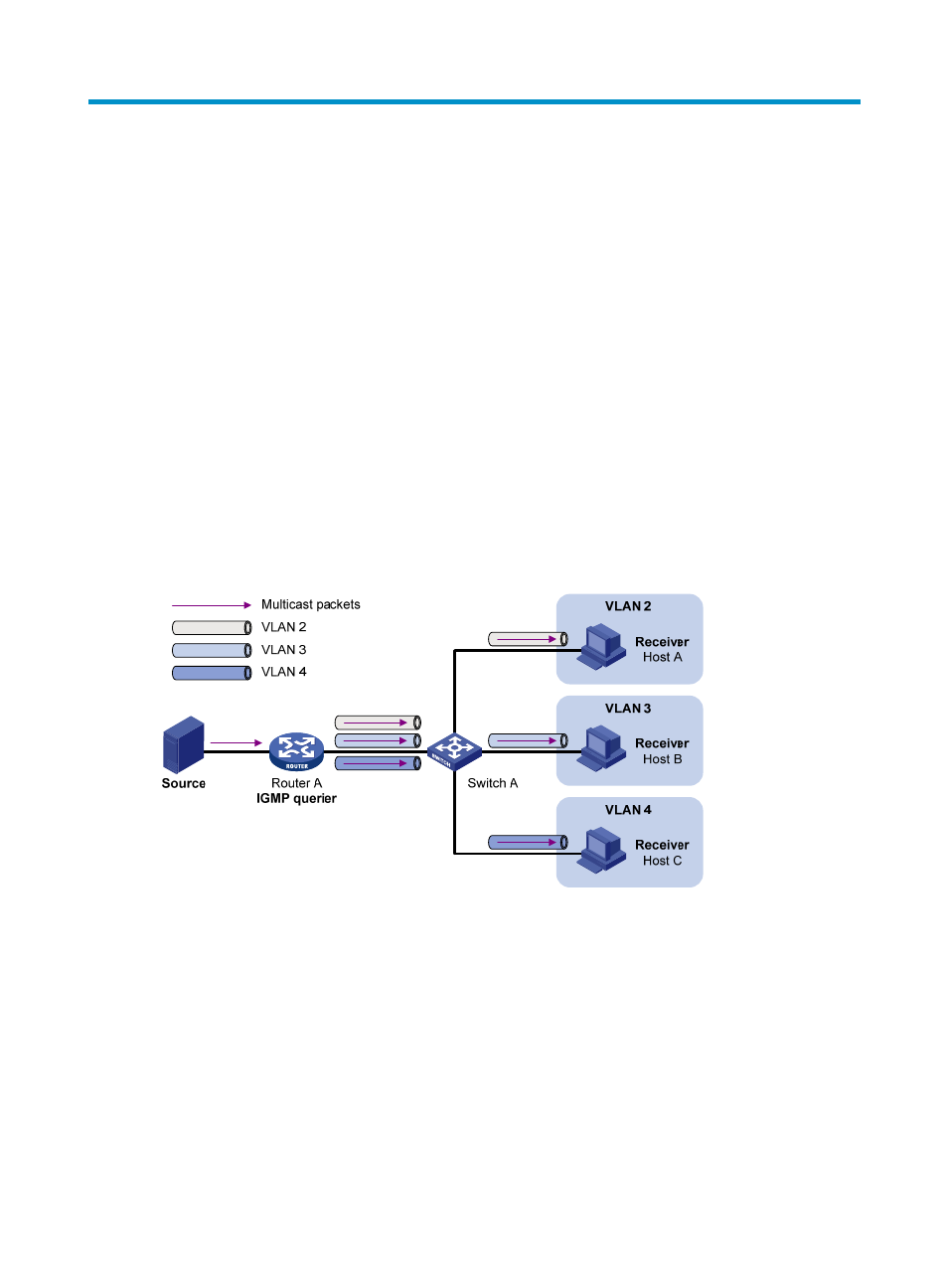Multicast vlan configuration, Introduction to multicast vlan – H3C Technologies H3C S3100V2 Series Switches User Manual
Page 59

51
Multicast VLAN configuration
This chapter includes these sections:
•
Introduction to multicast VLAN
•
Multicast VLAN configuration task list
•
Configuring port-based multicast VLAN
•
Displaying and maintaining multicast VLAN
•
Multicast VLAN configuration examples
Introduction to multicast VLAN
In the traditional multicast programs-on-demand mode shown in
, when hosts—Host A, Host B
and Host C—that belong to different VLANs require multicast programs on demand service, the Layer 3
device—Router A—must forward a separate copy of the multicast traffic in each user VLAN to the Layer
2 device—Switch A. This results in not only waste of network bandwidth but also extra burden on the
Layer 3 device.
Figure 18 Multicast transmission without multicast VLAN
The multicast VLAN feature configured on the Layer 2 switch is the solution to this issue. With the multicast
VLAN feature, the Layer 3 device must replicate the multicast traffic only in the multicast VLAN instead of
making a separate copy of the multicast traffic in each user VLAN. This saves network bandwidth and
lessens the burden on the Layer 3 device.
The multicast VLAN feature can be implemented by the following approaches:
As shown in
, Host A, Host B and Host C are in three different user VLANs. All user ports—ports
with attached hosts—on Switch A are hybrid ports. On Switch A, configure VLAN 10 as a multicast
VLAN, assign all user ports to this multicast VLAN, and enable IGMP snooping in the multicast VLAN
and all user VLANs.
